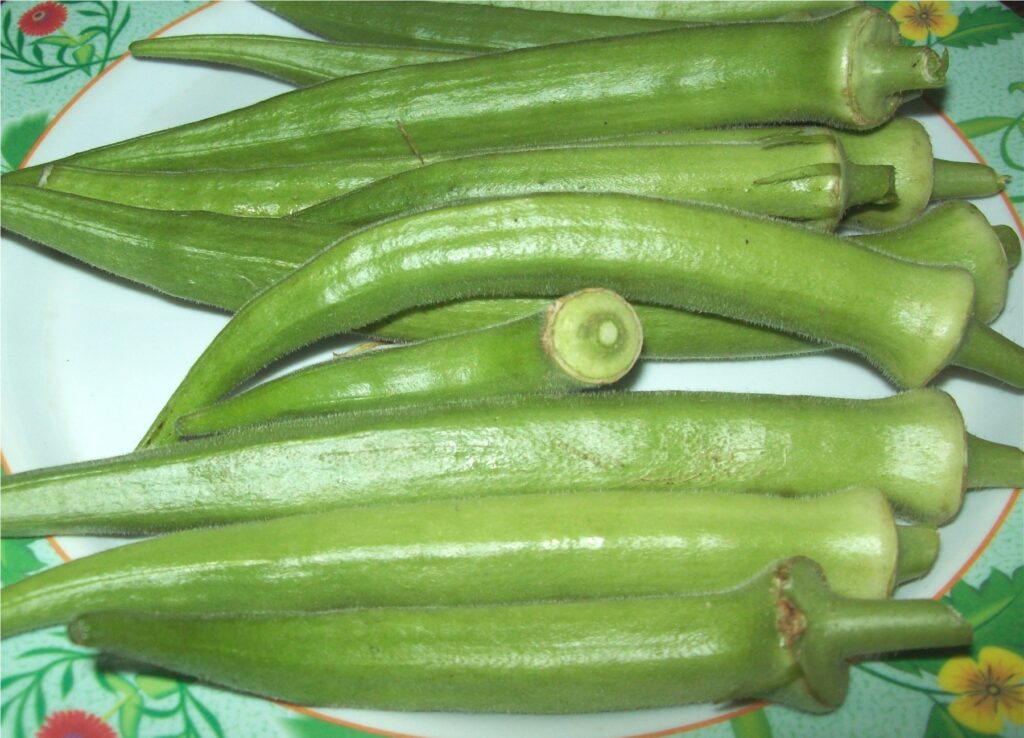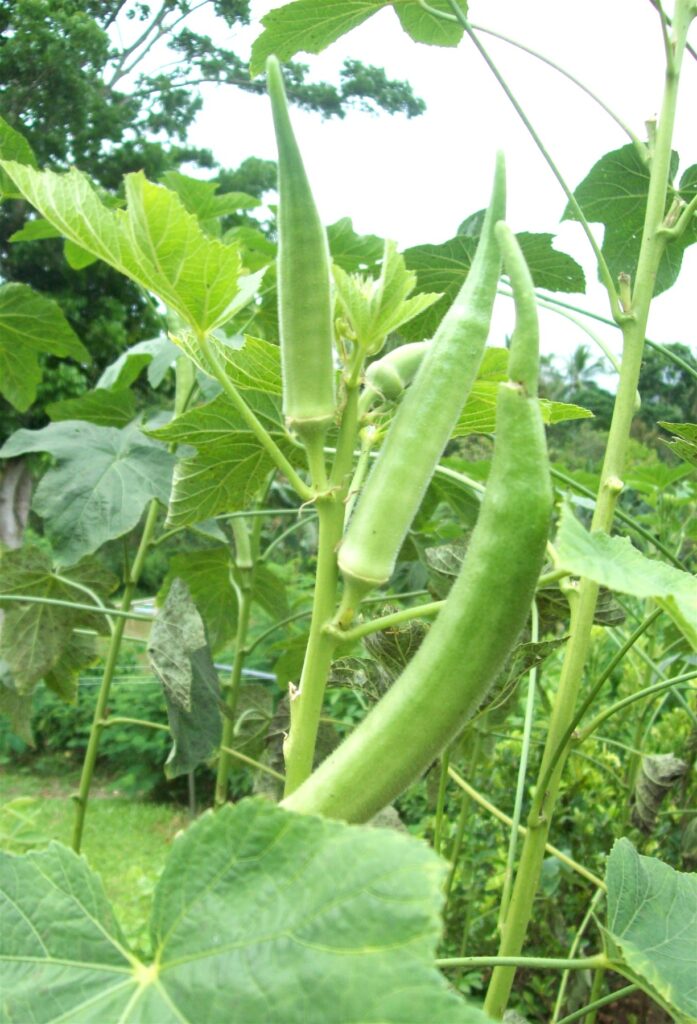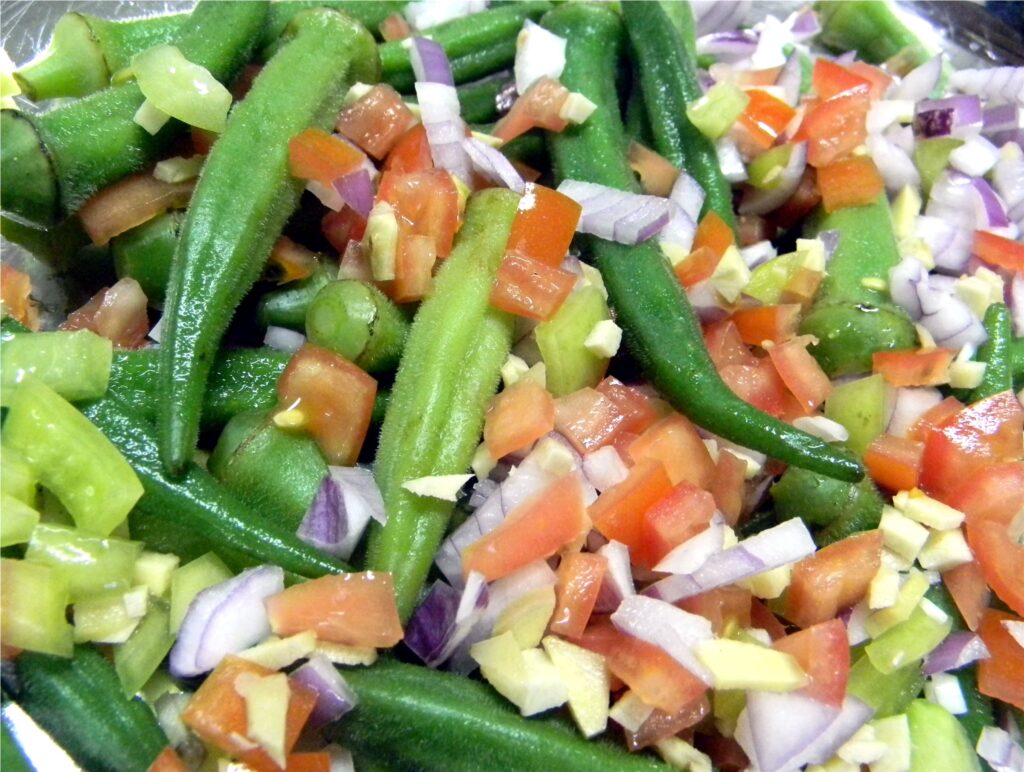Text and Photos by Henrylito D. Tacio
There is money in growing okra. Like other vegetables, okra is a popular table fare of Filipinos.
“Okra is a vegetable crop that has proved to be very profitable to grow,” says Jethro P. Adang, the director of the Mindanao Baptist Rural Life Center (MBRLC) Foundation, Inc., a non-government organization based in Kinuskusan, Bansalan, Davao del Sur. “If properly managed, a crop can provide fresh and delicious okra pods aside from a year-round income a farmer can get from it.”
Okra is used primarily as a fresh vegetable. The pods are sliced crosswise or diagonally before cooking. Sometimes, the slices are boiled or fried. Cooked okra is mucilaginous and is not always appreciated when first tried. Most people, however, rapidly acquire a liking for this vegetable. Frying reduces the mucilage and makes the okra acceptable.
In Egypt, Greece, Iran, Iraq, Jordan, Lebanon, Turkey, Yemen, and other parts of the Mediterranean, okra is widely used in a thick stew made with vegetables and meat. In Indian cooking, okra is sautéed or added to gravy-based preparations and is very popular in South India. In the Caribbean islands, okra is cooked up and eaten as soup, often with fish.
Okra became a popular vegetable in Japanese cuisine; okra is served with soy sauce and katsuobushi or tempura. Breaded, deep-fried okra is served in the southern United States. The immature pods may also be pickled.
Okra forms part of several regional “signature” dishes. Frango com quiabo (chicken with okra) is a Brazilian dish that is especially famous in the region of Minas Gerais. Gumbo, a hearty stew whose key ingredient is okra, is found throughout the Gulf Coast of the United States. It is also an expected ingredient in callaloo, a Caribbean dish and the national dish of Trinidad and Tobago. In the Philippines, okra is the important ingredient in the Ilocano dish pinakbet.
In West Africa and in some parts of Southeast Asia, okra is highly valued for its leaves. They are cooked just like spinach. They are found to be high in vitamins A and C, protein, calcium, and iron.
In some countries, okra seeds rather than the whole young pods are of most interest. When ripe, the seeds yield edible oil that is the equal to many other cooking oils, including olive oil. The greenish-yellow edible oil of okra has a pleasant taste and odor and is high in unsaturated fats. The oil content of the seed is quite high (about 40%). The oil is readily hydrogenated for use as solid shortening and could be used in margarine.
Both the pods and seeds are excellent feed for livestock. The fiber that could be taken from the stem and mature pods are materials for paper making.
Here’s another reason for planting okra. “The plant could have a future in serving the booming markets for health foods. Given an aging global population increasingly concerned over sickness prevention, mucilage is big business these days,” a source said.
In addition, okra could have a future also as a supplier of commercial laxative ingredients. Its gelatinous substances absorb water, swell, and ensure bulky stools that obviate and overcome constipation. Any and all dietary fiber is helpful, but okra seems to rank with two crops now commanding multimillion-dollar markets: flaxseed and psyllium. In other words, this vegetable may not only bind excess cholesterol and toxins but assure their quick and easy passage out of the body.
Okra grows well at altitudes below 1,000 meters, where it is tolerant to a wide range of soils (but best results can be obtained from silty loam to clay loam soils). The soil must be well-drained (for it cannot tolerate a waterlogged area) and contain adequate organic matter.
Like most tropical crops, okra likes a long, warm growing season with a monthly average temperature of 25 degrees Centigrade. A pH from 6.0 to 6.8 is desired.
There are several varieties of okra grown in the Philippines. But the recommended ones are the following: Perfect Perkins, Emerald, Sabour Selection, Smooth Selection, Climson Spineless, Lady Finger, Long Green, White Velvet, Levadian, Lavelna, and Perkin Dwarf.
For those who want to grow okra in their backyard or farms, here are some pointers from the MBRLC and the Department of Agriculture:
Land preparation. The area where you’re going to plant okra should be prepared thoroughly. Plow the field first and then harrow immediately. Let the field stand for seven days in order to allow weed seeds to germinate and grasses to decompose. Plow again and harrow immediately to break soil clods not pulverized in the first plowing. Let the field stand for another seven days to allow second-growth weeds to grow. Plow the field for the third time and harrow immediately to obtain excellent soil tilth.
Planting. Okra seeds are planted directly in the field. Sow the seeds in the soil that is slightly moist (not too wet and not too dry). Drop three to four seeds per hill and cover with topsoil thereafter. For closer spacing, plant okra seeds 30 centimeters by 60 centimeters apart in hills and in rows. For wider spacing, the okra plants should be spaced 60 centimeters by 150 centimeters apart in hills and in rows.
To set uniform plant population, replant dead or missing hills three days after the seedlings emerge. Fifteen days after planting, thin the plants to two seedlings per hill. Remove small and sickly seedlings by hand pulling; be sure not to disturb or destroy the healthy seedlings.
Care and maintenance. To attain maximum yield, fertilize the okra plants. In the absence of soil analysis, apply 300-500 kilograms of 12-24-12 (NPK) per hectare. Put a minimum of 5.4 to 8.1 grams per plant or a maximum of 27 to 40.5 grams per plant.
To cultivate, off-bar the field by passing a plow 15 centimeters away from the base of the plants. Plow the soil five centimeters deep. Throw the soil clods between the interrow spaces. The plants covered by soil during the off-barring should be saved by removing the soil carefully from the stems and leaves.
Pest management. Okra plants are attacked by several insects and diseases like cutworm, corn earworm, melon aphids, flea beetle, leafhopper, eelworm, and root-knot nematode. To combat these, spraying with recommended pesticides, practicing crop rotation, using resistant varieties are recommended. When using pesticides, be sure to follow the instructions written on the label.
Harvesting. Harvesting can be started two to three months after planting. Only young and tender okra pods are harvested. Harvesting should be done as early as possible of the day. Okra pods harvested during cooler times of the day stay fresh longer. Always keep harvested pods in the shade or provide portable sheds in the field. Pods exposed under the sun soften and discolor faster. About 20 to 25 tons of okra pods can be harvested per hectare.
Post-harvesting. Right after harvesting, air-dry okra pods immediately, that is, if you harvest them wet. Wet okra pods are easily attacked by rot-causing microorganisms.
Sort them into sizes as you pick the pods by having a collecting container with compartments. Small okra cannot support the bigger pods without being injured. Remember that okra has soft tissues, and it injures easily.
Separate blemished, malformed, insect-attacked, injured, or diseased pods. Poor quality pods age fast and affect other pods.
Transporting. In transporting okra to market, use shallow well-ventilated cartons and always stack the cartons in a manner that will allow adequate ventilation. Ventilation is important to prevent heat build-up inside the carton.
Transport okra by night or early morning in the absence of refrigerated trucks. The heat of the day speeds up discoloration, softening, or aging. Ensure that the cartoons are positioned properly during transport. Constant horizontal or vertical movement causes injuries.




